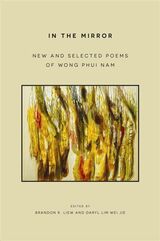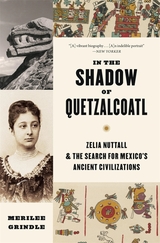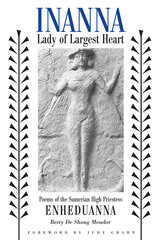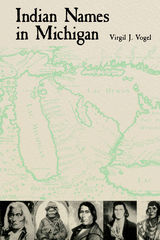6 books about Bumsted, J.M.
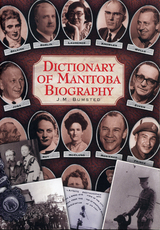
Dictionary of Manitoba Biography
J.M. Bumsted
University of Manitoba Press, 1999
Manitoba has been at the crossroads of many of the important debates and events in Canadian history. From the early fur trade to the Riel Rebellion to the Winnipeg General Strike, Manitobans have frequently played crucial roles in Canadian and sometimes world history. Until now, there has been no comprehensive, contemporary source for information on the many Manitobans who have left their mark on history and society. Dictionary of Manitoba Biography fills this gap, with biographical sketches of over 1700 Manitobans who have made an impact in politics, the arts, sports, commerce, agriculture, and society. It is an invaluable resource for scholars, students, and general readers interested in Canadian history. Particular emphasis has been placed on reflecting Manitoba's ethnic and social diversity, and on including men and women who were notable in their own day but have now been forgotten. Many entries also refer the reader to additional references for further reading. More than a reference book, Dictionary of Manitoba Biography is also a fascinating work of history in its own right, which presents the full and colourful scope of over 300 years of people in Manitoba history and social life, from premiers and mayors to nightclub owners and sports heroes.
[more]

Lord Selkirk
A Life
J.M. Bumsted
University of Manitoba Press, 2008
Thomas Douglas, the Fifth Earl of Selkirk (1770–1820), was a complex man of his times, whose passions left an indelible mark on Canadian history. A product of the Scottish Enlightenment and witness to the French Revolution, he dedicated his fortune and energy to the vision of a new colony at the centre of North America. His final legacy, the Red River Settlement, led to the eventual end of the dominance of the fur trade and began the demographic and social transformation of western Canada.
The product of three decades of research, this is the definitive biography of Lord Selkirk. Bumsted’s passionate prose and thoughtful analysis illuminate not only the man, but also the political and economic realities of the British empire at the turn of the nineteenth century. He analyzes Selkirk’s position within these realities, showing how his paternalistic attitudes informed his “social experiments” in colonization and translated into unpredictable, and often tragic, outcomes. Bumsted also provides extensive detail on the complexities of colonization, the Scottish Enlightenment, Scottish peerage, the fur trade, the Red River settlement, and early British-Canadian politics.
The product of three decades of research, this is the definitive biography of Lord Selkirk. Bumsted’s passionate prose and thoughtful analysis illuminate not only the man, but also the political and economic realities of the British empire at the turn of the nineteenth century. He analyzes Selkirk’s position within these realities, showing how his paternalistic attitudes informed his “social experiments” in colonization and translated into unpredictable, and often tragic, outcomes. Bumsted also provides extensive detail on the complexities of colonization, the Scottish Enlightenment, Scottish peerage, the fur trade, the Red River settlement, and early British-Canadian politics.
[more]

The Peoples Clearance
Highland Emigration to British North America, 1770-1815
J.M. Bumsted
University of Manitoba Press, 1982
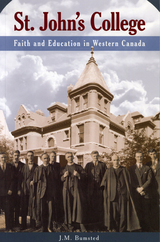
St. John's College
Faith and Education in Western Canada
J.M. Bumsted
University of Manitoba Press, 2006
Winnipeg’s St. John’s College is one of the oldest educational institutions in western Canada. Its roots go back to the Red River Settlement in the 1850s when it first began as a school for the English-speaking children of the employees of the Hudson’s Bay Company. By the 1880s, the college had developed into an Anglican institution providing instruction in the liberal arts and theology, and in the same period it became one of the founding colleges of the University of Manitoba. By the 1920s, it was responsible for producing some of the university’s finest students, including the historian W.L. Morton. For much of its 150-year history, St. John’s was closely connected with Manitoba’s Anglo-Celtic financial and political elite, and it often shared both the strengths and shortcomings of that group. Following the college through its many permutations, J.M. Bumsted provides a fascinating history of the birth and growth of post-secondary education in western Canada.
[more]
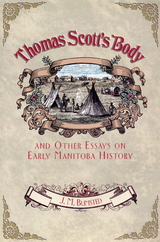
Thomas Scott's Body
And Other Essays on Early Manitoba History
J.M. Bumsted
University of Manitoba Press, 2000
What did happen to the body of Thomas Scott?The disposal of the body of Canadian history's most famous political victim is the starting point for historian J.M. Bumsted's new look at some of the most fascinating events and personalities of Manitoba's Red River Settlement.To outsiders, 19th-century Red River seemed like a remote community precariously poised on the edge of the frontier. Small and isolated though it may have been, Red River society was also lively, well educated, multicultural and often contentious. By looking at well-known figures from a new perspective, and by examining some of the more obscure corners of the settlement's history, Bumsted challenges many of the widely held assumptions about Red River. He looks, for instance, at the brief, unhappy Swiss settlement at Red River, examines the controversial reputation of politician John Christian Shultz, and delves into the sensational scandal of a prominent clergyman's trial.Vividly written, Thomas Scott's Body pieces together a new and often surprising picture of early Manitoba and its people.
[more]

The University of Manitoba
An Illustrated History
J.M. Bumsted
University of Manitoba Press, 2001
Established in 1877, just seven years after the founding of the province itself, the University of Manitoba has grown to become an international centre of research and study. It is the birthplace of discoveries such as the cure for Rh disease of newborns and the development of Canola, and its alumni include Marshal McLuhan, Margaret Laurence, Monty Hall, Israel Asper and Ovide Mercredi.Historian J.M. Bumsted looks at how the university was forged out of the assembly of several, small, denominational colleges, and how it survived and even thrived during challenges such as the 1932 defalcation and the 1950 Manitoba flood. He gives special attention to student life at the university, tracing the changes, from Freshie initiations in the 1920s and student musicals in the 1950s to the activism of the 1960s and 1970s.The University of Manitoba: An Illustrated History is an entertaining and lively social history of an institution whose development has reflected the changes of society at large.
[more]
READERS
Browse our collection.
PUBLISHERS
See BiblioVault's publisher services.
STUDENT SERVICES
Files for college accessibility offices.
UChicago Accessibility Resources
home | accessibility | search | about | contact us
BiblioVault ® 2001 - 2025
The University of Chicago Press


